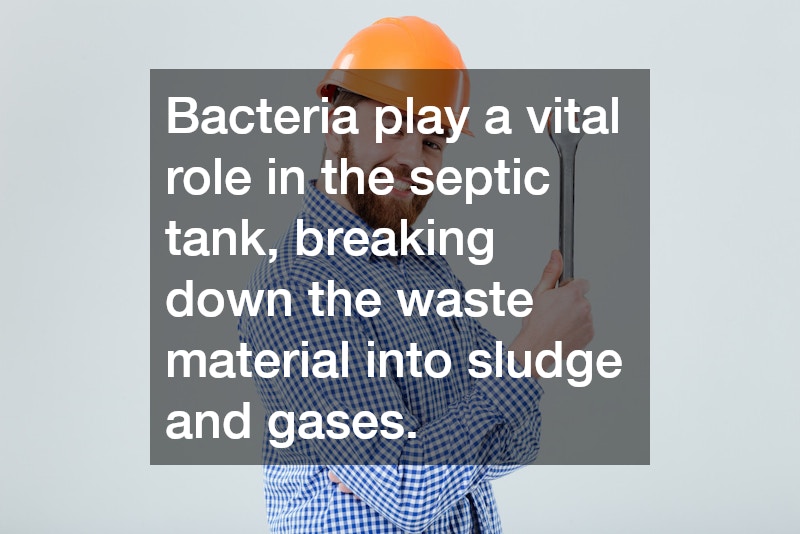How Do Septic Systems Work?
Septic systems play a crucial role in managing wastewater for households not connected to municipal sewer systems. They are efficient, underground wastewater treatment structures that use a combination of nature and technology to treat wastewater from bathrooms, kitchen drains, and laundry. Understanding how septic systems work is essential for their proper maintenance and lifespan extension.
Understanding the Components of a Septic System
A typical septic system has two key components: the septic tank and the drain field or soil absorption field. The septic tank itself is a watertight container made of concrete, fiberglass, or polyethylene installed underground.
Its primary function is to hold the wastewater long enough to allow solids to settle to the bottom, forming sludge, while oil and grease float to the top as scum.
The remaining liquid wastewater, also known as effluent, exits the tank and is further treated by the drain field. The drain field consists of a network of perforated pipes spread over a large area. This allows the effluent to slowly trickle into the soil, where natural filtration removes harmful bacteria, viruses, and nutrients.
Septic systems are carefully designed to manage wastewater and prevent environmental contamination effectively. However, improper maintenance or overloading the system can lead to failure. This not only affects the immediate household but also poses a risk to the surrounding environment and public health.
Role of Bacteria in Septic Systems
Bacteria play a vital role in the septic tank, breaking down the waste material into sludge and gases. These microscopic organisms are naturally present in our gastrointestinal system and the wastewater itself. They aid in decomposing organic matter, reducing the amount of solid waste in the septic tank.
The bacteria not only digest the waste but also help in reducing odors generated by the septic system. They turn organic solids into water, carbon dioxide, and fewer solid forms, preventing the tank from rapidly filling up. Without these bacteria, the system would require constant cleaning and maintenance.
When powerful chemicals or antibacterial soaps are used in excess in the household, they can kill these beneficial bacteria. This leads to an inefficient septic system and potentially serious clogs or overflows. Therefore, regular septic maintenance and avoiding such harsh chemicals are crucial to the health of the system.
Why Regular Septic Pumping is Essential
Regular pumping of septic tanks is crucial for their optimal functioning and longevity. Over time, sludge accumulates at the bottom of the tank, while scum gathers at the top. This accumulation reduces the tank’s capacity to hold new wastewater, causing potential overflows or failures.
Septic pumping companies are specialized in cleaning out these tanks to maintain a delicate balance necessary for efficient system operation. By removing the excess solids, they ensure that the effluent can continue to pass into the drain field without causing clogs. It also prevents the possibility of pollution due to overflow into the yard or backup into the house.
Experts recommend that septic tanks should be inspected and pumped every three to five years, depending on the size of the tank and household usage. Ignoring this advice can lead to expensive repairs or complete system replacement. Moreover, regular inspections by septic pumping companies can identify potential issues early, before they escalate.
Common Issues with Septic Systems
Despite their effectiveness, septic systems can develop issues over time. These problems often arise from improper habits or lack of maintenance. For instance, flushing non-biodegradable items such as wipes, diapers, or feminine products can quickly clog the system.
Soil saturation from heavy rains or excessive water usage in the household can also strain the system. When the soil around the drain field becomes waterlogged, it cannot effectively filter the effluent, leading to backups or leaks. This highlights the importance of water conservation in households relying on septic systems.
Another common problem is tree roots infiltrating the septic tank or drain field. Roots are naturally attracted to the constant moisture around these areas and can cause significant damage if not addressed promptly. Regular monitoring and appropriate landscaping can help prevent these intrusive issues.
Environmental Considerations and Benefits
Septic systems provide an environmentally sound method of wastewater management when properly maintained. They prevent the need for energy-intensive centralized sewage systems and help recycle water back into the local ecosystem. By treating wastewater on-site, septic systems play a crucial part in groundwater protection.
When considering installing or maintaining a septic system, proper design is key to minimizing environmental impact. Factors such as soil type, system size, and placement are critical for effective functioning. Local regulations often dictate specific requirements to ensure both the efficiency and safety of these systems.
Ultimately, well-designed and carefully maintained septic systems can coexist harmoniously with the environment. Engaging professional services such as septic pumping companies ensures that these systems work effectively and sustainably, protecting natural resources and public health.





